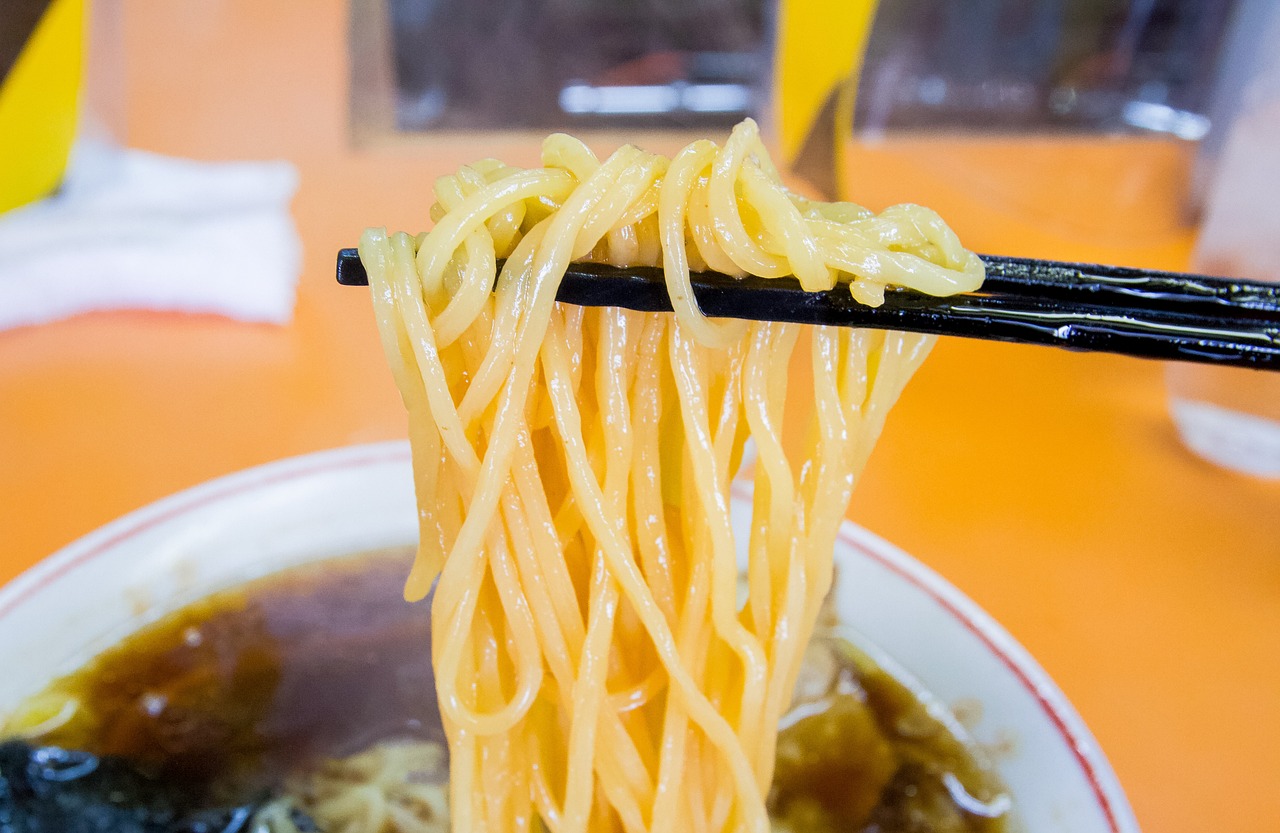Tokyo-style noodles, also known as Tokyo ramen noodles or Tokyo-style chukamen, are a type of wheat-based noodles that are commonly used in Tokyo-style ramen. Ramen itself originated from China and was introduced to Japan in the late 19th century. Over time, ramen evolved and underwent regional adaptations throughout Japan, with each region developing its own unique styles and characteristics.
Tokyo-style noodles are typically made from wheat flour and kansui, an alkaline mineral water that gives the noodles their characteristic texture and elasticity. The alkaline properties of kansui contribute to the noodles' firmness and chewiness, allowing them to hold up well in the hot broth without becoming mushy or overcooked.
Adjust servings according to the need.
Noodles have to mature for 24 hours in the fridge.
Ingredients

The thickness and shape of Tokyo-style noodles can vary depending on the ramen shop or the specific style within Tokyo. However, they are generally thinner and straighter compared to some other regional ramen styles in Japan. The thinness allows the noodles to cook quickly and evenly, while the straight shape provides a more delicate and elegant appearance.
Outcome of this recipe is used as noodles for the tonkotsu ramen.
Directions
Kansui is a catchall term for the alkaline salts used to increase the pH of the water and impact the gluten and structure of the noodle. The heat causes the sodium bicarbonate to become sodium carbonate, water, and CO2, where the latter two evaporate off. The gas you’re seeing is mostly water like you’d see when boiling water, except it’s also being created by a chemical reaction, not just by adding heat to water. Eventually this stops and the texture changes once all of the bicarbonate is converted.
- In a small saucepan heat baking soda and heat over medium heat, stirring constantly.
- The contents of the pot may initially become liquid-like, as it flows easily.
- While it heats, small geysers of gas will erupt from the surface.
- It will look like it’s boiling.
- After around 15 minutes, and the powder will become difficult to stir.
- Remove the pot from the heat, cover, and allow it to cool.
- In a standing mixer with a paddle attachment, add dry ingredients.
- Mix for 30 seconds to aerate the mix.
- Add two-thirds of your water mixture slowly, in an even stream.
- Let the mixer stir the flour and water mixture for 3 minutes.
- Add in the remaining water mixture with the mixer running.
- Run for another minute, until small clumps begin to form.
- Turn off the mixer, and add the mixture to a sealable bag.
- Close, and let this rest for 1 hour at room temperature. Don’t skip this.
- Knead using pasta machine, going through the largest setting, then the 2nd, then the 3rd.
- Take the dough and fold it, sheeting under the 2nd widest setting.
- Then fold it again and sheet it under the widest setting.
- Repeat this until the sheet is quite smooth and not ragged.
- Put the dough back in the plastic bag, and rest at room temp for 30 minutes.
- Portion into workable sizes, and roll out to desired thickness.
- Use potato or cornstarch as you go to prevent sticking.
- Cut your noodles to your desired thickness.
- Divide noodles to 130g per portion and store them in sealable bags.
- Put the bag in the fridge and allow it to rest for at least a day.